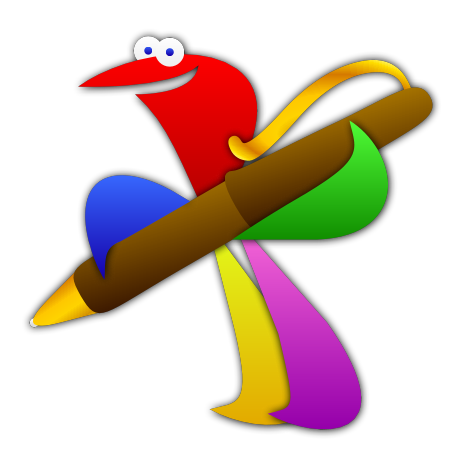Welcome back to the second part of our behind-the-scenes look at the tools of Many Tricks’ trade. In the first part, we discussed how we create our applications and manage our online activities. In this part, we’ll discuss how we keep the business running and some general Mac applications we use every day.
Running the business
- iChat (free with Mac OS X): We rely on iChat extensively. Most of our written communication is via iChat (so we both have transcripts enabled, to record what we type), and we use screen sharing (to work through the product design and implementation process) and video chat (so we can occasionally speak instead of type). Without iChat or something like it, our time and distance separation would make running the business much tougher.
- Dropbox (free): With the distance between us, we needed some easy way to move files back and forth. Dropbox fits the bill perfectly, and makes it super easy for us to share our files back and forth—any changes made to the shared folder are automatically duplicated to all our Macs. It doesn’t get much easier than that. We wonder how they can afford to make it a free service, though.
- The Hit List ($50): We use The Hit List (THL) to track all of our to dos for current and future apps, and for the business itself. While THL isn’t a true multi-user app, we’ve sort of solved that by using Dropbox: we moved the THL support files into a folder on Dropbox, and now we can both see and work with the same set of data—just not at the same time. So far, this has worked really well. We like THL’s elegant interface, and its support for tagging lets us manage a number of complex mini-projects with ease.
- E-junkie ($ varies): The provider of our online shopping cart. While Rob thinks they have a less-than-ideal name (Peter of course finds that name hilarious, but then, he also thought “Textpander” was funny), they provide a great service, and their system is very flexible and easy to work with.
- PayPal and Google Checkout (% commission): These two companies handle payment processing (i.e. credit card approvals) after a user places an order with the E-junkie online store. Most of our customers (over 80%) use PayPal, and it seems they process orders more quickly than does Google Checkout.
From Rob’s point of view:
- FileMaker Pro 11 ($ varies): One of the issues I faced when joining Many Tricks was incomplete historical customer data. To make sure we better tracked our sales activity going forward, I created a FileMaker Pro customer database. I hadn’t used FileMaker extensively in nearly a decade, but my basic skills came back pretty easily. The database is manually updated (via an automated script) with data I download from E-junkie. (This database does not contain credit card information; it stores only the basic data you provide when purchasing an app. It also resides solely on my machine, and is not stored online anywhere, including Dropbox.)
- Microsoft Excel 2008 ($ varies): To keep Peter in the loop about our sales activities, we have an online sales report that summarizes activity by day, by product, and by payment processor, and graphs sales activity in each of our main products. This report is created automatically by Excel, using a script in FileMaker Pro that exports the data, then opens and updates the relevant Excel spreadsheets. When the script tells Excel to save the sheets, a setting in Excel also updates the local web page versions of those sheets. (No, we’re not giving you a link for this one.)
- AppleScript, Folder Actions, and shell scripting: The combination of these tools is used to automatically update the online sales report. A Folder Action watches the folder where I save the sales reports, and runs an AppleScript when it sees a newly-added file. The AppleScript uses a shell script (which, in turn, uses scp) to upload the sales report pages to our web site. When done, the AppleScript deletes the files in the folder, so that it’s ready for the next save. (Folder Actions can’t watch for changes to existing files in a folder, just files being added to a folder. So I keep the folder empty until a new report is ready.)
- rsync (free with Mac OS X): We use rysnc to back up our online presence. Using rsync and a cron task, our web files (HTML, PHP, etc.) and SQL databases are backed up to my machine three times a day. From there, Time Machine backs them up onto another drive, and they’re copied to a FireWire drive for offsite storage once a week. I feel pretty confident that if we ever suffer a catastrophic hosting failure, we’ll be able to get back up and running quickly with minimal data loss.
General Mac tools
- TextExpander ($35): We use TextExpander to auto-expand various snippets of text, including stock replies to certain email inquiries and inserting HTML snippets in our web files. If you do much writing at all, a text expansion tool is highly recommended. If you need help choosing one, some guy named Rob Griffiths, who used to write for Macworld, recently reviewed and compared four such apps. (Peter is somewhat emotionally attached to TextExpander, so it should be obvious what his favorite among these is.)
- TextWrangler (free): When either of us is not working on something in Coda, and we just want to edit some text, we’ll usually fire up TextWrangler. Rob’s text processing needs are relatively simple now, and Peter’s text processing needs have always been that way, so TextWrangler supports everything we need out of a text editor.
From Rob’s point of view:
- Data Backup ($59) and Time Machine (free with Mac OS X): I use Data Backup to run the weekly backups to my offsite FireWire drive (it comes home once a week for copying), and use Time Machine for near-real-time backups of Many Tricks’ data.
- Growl (donations welcome): While we include Growl support in some of our apps, I also personally use Growl to notify me of activities in key capps. Transmit, Coda, Dropbox, and iChat (via the Chax plug-in), for instance, all support Growl. So when Peter updates the files in our Dropbox folder, my Growl alert pops up and lets me know there are new files there. Growl is so good I keep expecting Apple to bundle something like it directly with the OS.
From Peter’s point of view:
- Finder (free with Mac OS X): Every Mac user is a Finder user, too, of course (except for the Path Finder orthodox, that is), so why am I mentioning the Finder explicitly? I’m using the Finder for a host of things Rob tends to do in a more automated fashion. For instance, I currently do most of my backups manually, because even after years of testing, I just haven’t ever been able to find a backup solution that felt as reliable as copying something by hand. See next paragraph for the exception that proves the rule.
- SuperDuper! ($27.95): This little utility is incredibly useful for backing up entire drives. It’s a pity it doesn’t do folder-to-folder synchronizing, too.
Beyond the tools we’ve listed here, there are many other programs (screenshot tools, screen movie tools, image creation and editing tools, etc.) we use, but the ones we’ve chosen to list here are the biggies. We hope you enjoyed this behind-the-scenes tour, and maybe you found an app or two that might fit your needs, too.
 Many Tricks
Many Tricks

That was very cool – a neat idea to do. I enjoyed it!
Yesss, what Marc wrote.
Deja Vu seems a pretty reliable software to me. You can backup anything (including Windows volumes) anywhere (on an encrypted image disk, for instance), get an alert if something goes wrong. Plus, it’s become very fast under 10.6.
Apple’s Finder is just an awful piece of crap, but you just can work without it. As far as I like Pathfinder, Mac OS X doesn’t work properly without the Finder on (Spotlight is off, for example).
As they say, “keep up the good work” (on the much awaited Butler).
Just noticed the new (? since when? I was offline for two weeks) headline typo and nice rendering of the bird :-)
Would you mind to tell us how you folks came upon the “Running Bird” thing? “Meep meep”? Anyway you seem to have a thing about animals: pony, geese, bird … I like that.
New since last night—it was a weekend project for Peter. I’ll let him explain the relevant details. :)
-rob.
The Running Bird is really just one of the less obvious motifs I saw in our new logo once we were finished with it. That’s one of the things I like about that logo, by the way: With a little bit of imagination, it can be a lot of things—it’s a Many Tricks logo, as it were. ;)
Bonus info: Why did we change the header? Considering the fact that the blog is the most personal part of the site (in my opinion, anyway), the old one seemed a little too impersonal. It didn’t even have a nice and colorful app icon like all the product pages do. So using real handwriting from one of us seemed very appropriate; and I had been looking for an excuse to play with the birdish side of the logo for a while anyway.